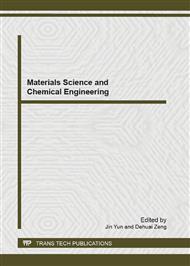p.223
p.228
p.234
p.238
p.245
p.251
p.257
p.262
p.268
The Roles of Arbuscular Mycorrhizal Fungus Glomus mosseae and Festuca arundinacea in Phytostabilization of Lead/Zinc Tailings
Abstract:
A greenhouse experiment was conducted to investigate the effects of the arbuscular mycorrhizal fungus Glomus mosseae on growth, metal accumulation and translocation of Festuca arundinacea for the phytostabilization of lead/zinc tailings in this study. The results showed that mycorrhizal inoculation substantially enhanced the growth of F. arundinacea and significantly decreased Pb and Cd concentrations in shoots. The bioconcentration factor and translocation factor values of Pb, Zn, Cu and Cd of F. arundinacea were much lower than 1, and inoculation further inhibited Pb, Cu and Cd translocation from roots into shoots, while enhanced Zn translocation. These results suggested that F. arundinacea inoculated with mycorrhizal might be a potential measure for revegetation of Pb/Zn tailings, especial for Pb, Cu and Cd stabilization, in northern China.
Info:
Periodical:
Pages:
245-250
Citation:
Online since:
May 2013
Authors:
Price:
Сopyright:
© 2013 Trans Tech Publications Ltd. All Rights Reserved
Share:
Citation:


